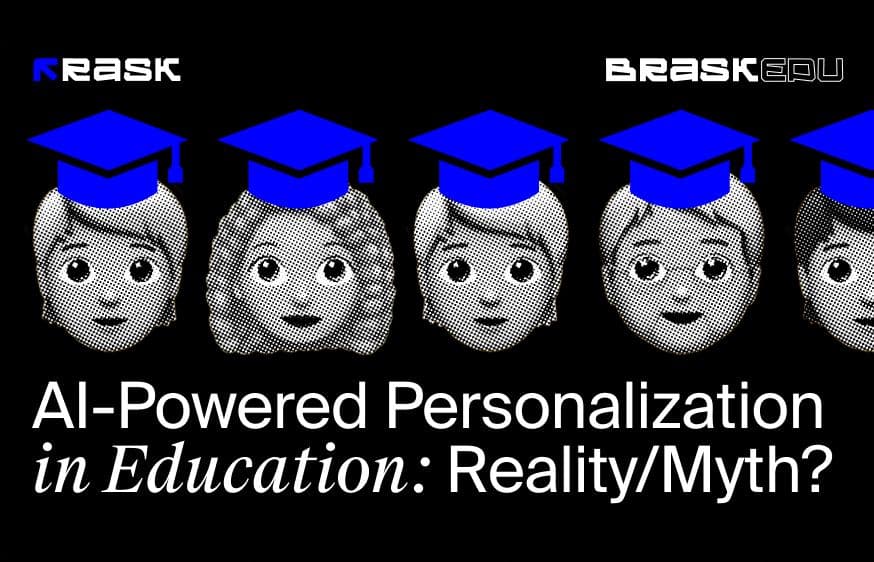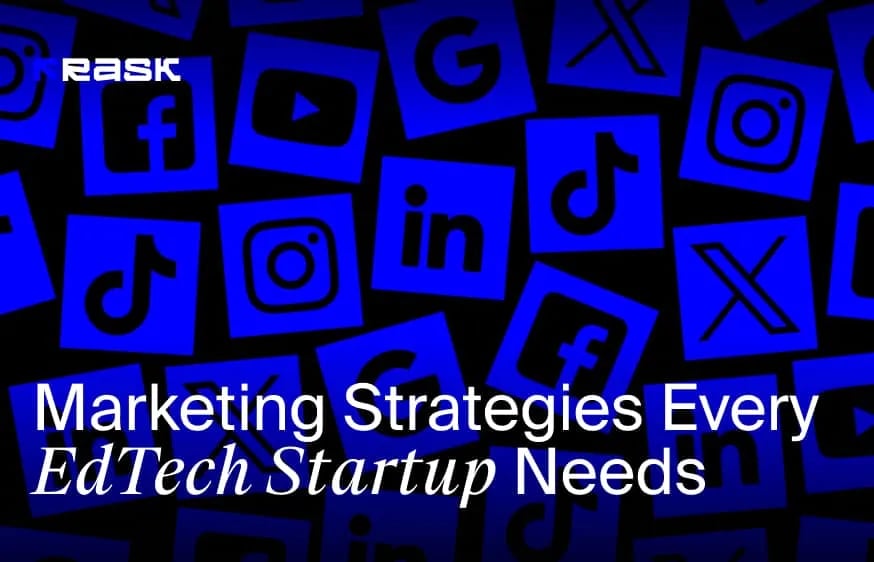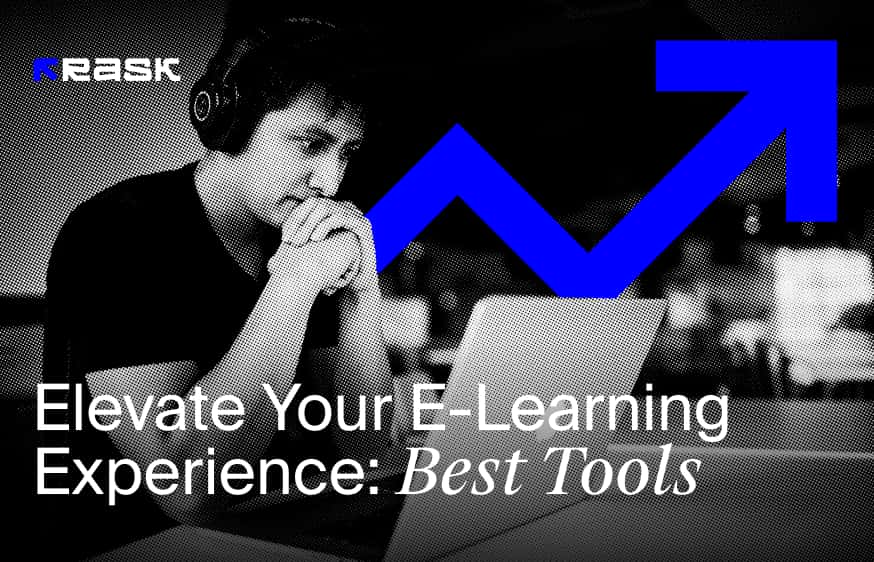शिक्षा का भविष्य: इंटरएक्टिव लर्निंग अनपैकिंग
पारंपरिक शिक्षा का विचार और अवधारणा लंबे समय से यहां रही है, हालांकि अब दुनिया नाटकीय रूप से बदल गई है और इसलिए, शिक्षा भी। जबकि कुछ तत्व अभी भी यहां हैं और अधिक वर्षों तक वहां रहते हैं, पारंपरिक शिक्षण आज अधिकांश के लिए एक विकल्प नहीं है।
कोविड-19 के प्रभाव और आज लगभग हर चीज के लिए मोबाइल फोन के बढ़ते उपयोग को देखते हुए, यह आश्चर्य की बात नहीं है कि शिक्षा अपने परिदृश्य और प्रारूप को बदल रही है। कक्षा में मानसिक रूप से मौजूद होना अब एकमात्र सीखने का विकल्प नहीं है - कम से कम प्रौद्योगिकियों और इंटरनेट के उदय के साथ।
आजकल, आपके पास जब भी और जहां भी आप चाहते हैं, एक गुणवत्ता शिक्षा तक पहुंच है, जब तक आप ऑनलाइन प्राप्त कर सकते हैं। इसलिए अब, दुनिया एक नए युग में कदम रख रही है - ऑनलाइन शिक्षा की क्रांति।
बाबसन सर्वे रिसर्च ग्रुप द्वारा किए गए एक हालिया सर्वेक्षण के आधार पर, अमेरिका भर में 30 प्रतिशत से अधिक उच्च शिक्षा के छात्र कम से कम एक दूरस्थ पाठ्यक्रम ले रहे हैं। ऑनलाइन शिक्षा जल्दी से किसी के लिए भी एक स्मार्ट विकल्प बन गई है - अपने शुरुआती स्कूल के वर्षों के दौरान बच्चों से लेकर वयस्कों तक जो विकसित करने के लिए नए कौशल की तलाश कर रहे हैं।
जबकि ऑनलाइन शिक्षा, जिसे ई-लर्निंग के रूप में भी जाना जाता है, निश्चित रूप से एक बढ़ती प्रवृत्ति है, सक्रिय शिक्षा भी आधुनिक शैक्षिक प्रणाली का एक महत्वपूर्ण तत्व है। शिक्षण तकनीक ें निश्चित रूप से दर्शकों और विषय की उम्र के आधार पर भिन्न होती हैं, लेकिन आर्टिफिशियल इंटेलिजेंस (एआई), संवर्धित वास्तविकता (एआर), मशीन लर्निंग (एमएल), और अन्य जैसी तकनीकों द्वारा संचालित इंटरैक्टिव लर्निंग कुछ ऐसा है जिसे कोई भी शैक्षिक संगठन अब लागू करना शुरू कर सकता है।
छात्र का ध्यान और समग्र जुड़ाव बढ़ाने के लिए इंटरएक्टिव लर्निंग को अक्सर कक्षाओं में एकीकृत किया जाता है। हालांकि ये दो मुख्य उद्देश्य हैं, यह दिखाया गया है कि सक्रिय शिक्षण जटिल विषयों और विषयों की गहरी समझ में भी सहायता करता है, जिससे विभिन्न उम्र के छात्रों के लिए इंटरैक्टिव पाठ की अवधारणा को समझना और समग्र रूप से सीखने में वृद्धि करना आसान हो जाता है।
इंटरएक्टिव लर्निंग क्या है?
इंटरएक्टिव लर्निंग एक सक्रिय शिक्षण तकनीक को संदर्भित करता है जिसके तहत छात्र सीखने की प्रक्रिया में लगे होते हैं, जो अक्सर प्रौद्योगिकी के माध्यम से किया जाता है। इंटरएक्टिव लर्निंग पारंपरिक की तुलना में एक पूरी तरह से अलग समाधान है जिसमें निष्क्रिय शिक्षा शामिल है, जैसे रटना या व्याख्यान देना।
जबकि इंटरैक्टिव लर्निंग का तकनीकी हिस्सा अभी भी कुछ लोगों के लिए डराने वाला हो सकता है, यह याद रखना महत्वपूर्ण है कि प्रौद्योगिकी, उस मामले में, केवल शिक्षाशास्त्र का समर्थन करने के लिए मौजूद है।
शिक्षकों को बढ़ी हुई शिक्षा में एक नया परिप्रेक्ष्य खोलने, नई शिक्षण संभावनाओं को खोलने और पाठ के दौरान भागीदारी में सुधार करने के लक्ष्य के साथ शैक्षिक प्रौद्योगिकी और उपकरणों का उपयोग करना चाहिए।
इंटरएक्टिव सबक के 4 उदाहरण
1. इंटरएक्टिव गेम्स
खेल लंबे समय से केवल मनोरंजन के लिए माना जाता है। लेकिन गेमिफिकेशन ने विभिन्न उद्योगों के लिए नए विचार लाए हैं, जो उन चीजों में अधिक जुड़ाव और रुचि प्रदान करते हैं जिन्हें लंबे समय तक उबाऊ माना जाता था, जैसे सबक।
नतीजतन, शिक्षा में गेमिंग (इंटरैक्टिव गेम सबक) को अब एक विशिष्ट प्रशिक्षण रणनीति के रूप में सूचीबद्ध किया गया है जो शिक्षार्थियों के बीच अधिक भागीदारी, प्रतिबद्धता के विकास और प्रेरणा की अनुमति देता है।
लोकप्रिय धारणा के विपरीत, इंटरैक्टिव लर्निंग में गेमप्ले विधियां आकर्षक और जटिल दोनों हैं - क्योंकि उनका उपयोग विशिष्ट कौशल के सुधार और विकास के लिए किया जाता है। वे प्रक्रिया में शिक्षार्थियों को शामिल करने, गलतियों को दिखाने और लगभग तत्काल प्रतिक्रिया प्राप्त करने पर केंद्रित हैं।
गेम-आधारित सीखने का एक अच्छा उदाहरण ट्रिविया है, जो छात्रों को कम से कम समय में विभिन्न विषयों पर बड़ी मात्रा में प्रश्नों का उत्तर देने की चुनौती देता है - लक्ष्य जितना संभव हो उतने अंक प्राप्त करना है।
2. सिमुलेशन और ब्रांचिंग परिदृश्य
ब्रांचिंग परिदृश्य (जिन्हें अक्सर निर्णय लेने के परिदृश्य भी कहा जाता है) छात्रों के सीखने के इंटरैक्टिव तरीकों को संदर्भित करते हैं। ये परिदृश्य निर्णय लेने और चुनौतियों को हल करने के लिए शिक्षार्थियों की क्षमता का परीक्षण करते हैं।
प्रत्येक परिदृश्य सीखने की सामग्री के भीतर छात्रों के लिए कई मार्ग खोलता है। अधिकांश मामलों में, प्रत्येक नया निर्णय एक अलग सीखने के परिणाम की ओर जाता है - शिक्षार्थियों को अपने विकल्पों के परिणामों का निरीक्षण करने में सक्षम बनाता है। दो अलग-अलग छात्र एक शाखा परिदृश्य के भीतर एक ही रास्ता नहीं अपनाएंगे।
ब्रांचिंग परिदृश्य और सिमुलेशन नरम कौशल विकसित करने के लिए मूल्यवान और प्रभावी तरीकों के रूप में कार्य करते हैं, जिसमें समस्या सुलझाने, संचार और नेतृत्व कौशल शामिल हैं। कभी-कभी कंपनियां इन परिदृश्यों और सिमुलेशन का उपयोग कर्मचारियों को काम की स्थितियों में रखने के लिए करती हैं जो वास्तविकता में सामना करने की संभावना नहीं है या जो कंपनी के लिए विशिष्ट जोखिम उठाते हैं।
3. इंटरैक्टिव वीडियो और एनिमेशन
यह शायद सबसे क्लासिक उदाहरण है जो पहले से ही अधिकांश शैक्षणिक संस्थानों द्वारा लागू किया गया है। इंटरएक्टिव एनिमेशन सीखने के संसाधनों का प्रतिनिधित्व करते हैं जो पारंपरिक व्याख्यान और निष्क्रिय सीखने की तुलना में छात्र के ध्यान और समझ को पकड़ने में बेहतर हैं।
वास्तव में, आपको हमेशा नए वीडियो को फिर से रिकॉर्ड करने या मौजूदा शिक्षण सामग्री को पूरी तरह से बदलने की आवश्यकता नहीं है। इंटरैक्टिव तत्वों को मौजूदा सीखने के पारिस्थितिकी तंत्र में जोड़ा जा सकता है। उदाहरण के लिए, इंटरैक्टिव वीडियो में अक्सर अंतर्निहित विराम होते हैं जहां वक्ता शिक्षार्थियों से हाल ही में प्रदान की गई सामग्री, बढ़ती भागीदारी और विषय की समझ के बारे में प्रश्न पूछते हैं।
4. इंटरएक्टिव आकलन और अभ्यास
ये दो तत्व हैं जो छात्रों के लिए शिक्षा और पाठ की अवधारणाओं को सुदृढ़ करते हैं। वे छात्रों को उनके प्रदर्शन की समीक्षा करने और अंतर्दृष्टि प्राप्त करने की अनुमति भी देते हैं।
कई प्रकार के इंटरैक्टिव आकलन और अभ्यास हैं; सबसे लोकप्रिय हैं:
- पूर्णता अभ्यास;
- बहुविकल्पीय अभ्यास
- समूहीकरण (छोटे समूह)।
एक प्रकार को "मिलान" के रूप में जाना जाता है - एक तार्किक तर्क गतिविधि जो छात्रों को विषय के समान तत्वों से जुड़ी दो अवधारणाओं को जोड़ने की अनुमति देती है। यह प्रकार ज्ञान के अधिग्रहण के लिए दो प्रमुख संकायों को विकसित और सुधारता है - सामान्य सोच और तार्किक तर्क।
इंटरैक्टिव कक्षाएं बनाने के लिए रणनीतियाँ
उन्नत व्याख्यान।
उन्नत व्याख्यान या एक पाठ्यक्रम को एक व्यापक श्रेणी माना जा सकता है जिसमें कक्षा के भीतर होने वाली इंटरैक्टिव सीखने की गतिविधियों और रणनीतियों की एक विस्तृत श्रृंखला शामिल है। उन्नत व्याख्यान आमतौर पर पारंपरिक के समान दिखता है, हालांकि इसमें इंटरैक्टिव शिक्षण उपकरणों का उपयोग शामिल होता है, जिससे प्रशिक्षकों को सीखने की प्रक्रिया के दौरान अक्सर छात्रों से प्रश्न पूछने की अनुमति मिलती है।
टर्निंगपॉइंट जैसे कई उपकरण हैं जो शिक्षकों को अपने छात्रों को विषय समझाने, तत्काल प्रतिक्रिया पूछने और प्राप्त करने की अनुमति देते हैं, और यहां तक कि एक विशिष्ट विषय या सामग्री में गहराई से गोता लगाने के लिए कक्षा चर्चा भी शुरू करते हैं। इसलिए, शिक्षक समग्र समझ का अनुमान लगाने और अपने अध्ययन और अनुसंधान विधियों को संशोधित करने में सक्षम होते हैं ताकि अधिक प्रभावी सीखने की प्रक्रिया की अनुमति मिल सके और उन चीजों को सरल बनाया जा सके जिन्हें समझना सबसे मुश्किल है।
फ़्लिप ्ड क्लासरूम।
यह शिक्षण मॉडल छात्रों को अग्रिम में प्रथम-प्रदर्शन सीखने के साथ प्रदान करता है। लोकप्रिय धारणा के विपरीत, शिक्षार्थियों के लिए घर पर अध्ययन करने के लिए एक पाठ रिकॉर्ड करना फ्लिप्ड लर्निंग को लागू करने का एकमात्र तरीका नहीं है। यहां जानने के लिए महत्वपूर्ण बात यह है कि छात्रों को कक्षा के बाहर अध्ययन करने का अवसर होना चाहिए - आमतौर पर शिक्षकों के लिए सामग्री, एक पढ़ने के असाइनमेंट, या कुछ अन्य तरीकों को समझाने के लिए एक वीडियो पाठ या व्याख्यान के माध्यम से जो आप पसंद करते हैं।
यह मार्गदर्शन अलग तरह से काम कर सकता है। उदाहरण के लिए, आगे की छोटी समूह चर्चाओं के लिए कक्षा से पहले इंटरैक्टिव होमवर्क प्रश्नों को पूरा किया जाना चाहिए। यह शिक्षार्थियों को अपने इन-क्लास समय पर बेहतर ध्यान केंद्रित करने में मदद कर सकता है, समग्र भागीदारी और शैक्षणिक परिणामों को बढ़ा सकता है।
सहकर्मी निर्देश
अध्ययनों में पाया गया कि सहयोग और टीम के काम एक इंटरैक्टिव सीखने के माहौल के निर्माण में महत्वपूर्ण भूमिका निभाते हैं। नतीजतन, सहकर्मी निर्देश उस उद्देश्य के लिए एक महान फिट प्रतीत होता है। यह एक ऐसी तकनीक है जिसमें प्रशिक्षकों को थोड़े समय के लिए शिक्षित करना शामिल है और, उन्नत व्याख्यान के मामले की तरह, समय पर अपने छात्रों से उस सामग्री से संबंधित प्रश्न पूछना जो वे चर्चा करना चाहते हैं।
भले ही आप एक-एक करके प्रश्न पूछ सकते हैं, लेकिन उनके लिए प्रत्येक प्रश्न का उत्तर देने के लिए बाद में छोटे समूह चर्चा बनाना सबसे अच्छा है। शिक्षण सत्र ों के अंत तक, छात्रों को सामग्री विषय वस्तु की बेहतर समझ और अधिक भागीदारी होगी।
टीम-आधारित शिक्षा
टीम-आधारित शिक्षा भी सहयोग को संदर्भित करती है। यह एक इंटरैक्टिव सीखने की रणनीति है जिसे मूल रूप से तीन-चरण चक्र में पढ़ाने वाले निर्देश प्रोफेसरों के मॉड्यूल के आसपास डिज़ाइन किया गया था:
- तैयारी;
- इन-क्लास तत्परता आश्वासन परीक्षण (पहले एक-एक करके और फिर एक समूह के रूप में);
- एप्लिकेशन-केंद्रित व्यायाम (जहां छात्र अभ्यास पर काम करने के लिए एक समूह बनाते हैं और आज की कक्षा के दौरान इसे पूरा करते हैं)।
इंटरएक्टिव लर्निंग के 3 प्रमुख लाभ
भले ही इंटरैक्टिव सीखने की रणनीतियों की योजना बनाने और लागू करने में कुछ समय लग सकता है, ऐसी अवधारणाएं कई मूल्यवान लाभ ला सकती हैं जो आपके संगठन और छात्रों दोनों को लंबी अवधि में आनंद ले सकते हैं। आइए नीचे दिए गए प्रमुख लोगों का पता लगाएं:
बढ़ी हुई भागीदारी
जैसा कि उम्मीद की जा सकती है, बढ़ी हुई व्यस्तता एक कक्षा में होने वाले इंटरैक्टिव सीखने को लागू करने के मुख्य लाभों में से एक है। ऊपर उल्लिखित सभी रणनीतियों का छात्र भागीदारी, बेहतर फोकस, प्रेरणा और कम दिवास्वप्न पर सकारात्मक प्रभाव पड़ सकता है। वास्तव में, एक हालिया अध्ययन में पाया गया कि 87 प्रतिशत छात्र रिपोर्ट करते हैं कि शिक्षा अधिक दिलचस्प है और उपयोग की जाने वाली तकनीक के साथ आकर्षक है।
अधिक सहयोग
यह ज्ञात है कि पारंपरिक और निष्क्रिय पाठ-केंद्रित कक्षाओं में, एक छात्र या कुछ और छात्र आमतौर पर अधिक प्रेरणा या कौशल के कारण कक्षा चर्चा पर हावी होते हैं। हालांकि यह इन छात्रों के लिए बहुत अच्छा है, चर्चा में शामिल अन्य छात्र गलत तरीके से जवाब देने से डर सकते हैं। इंटरैक्टिव लर्निंग, इसलिए, हर किसी को कक्षा की चर्चाओं में भाग लेने, स्वतंत्र रूप से अपने विचारों और विचारों को व्यक्त करने, कौशल विकसित करने और भय को कम करने की अनुमति देता है।
इंटरएक्टिव लर्निंग छात्रों को साथियों के साथ जुड़ने, चिंता के बिना अपने विचारों को व्यक्त करने और अधिक विविध दृष्टिकोणों से अवगत कराने में सक्षम बनाता है। इंटरैक्टिव लर्निंग द्वारा प्रदान किया जाने वाला सहयोग भी समस्या सुलझाने के कौशल को प्रोत्साहित करता है जो विभिन्न जीवन क्षेत्रों में महत्वपूर्ण हैं।
आलोचनात्मक सोच
इंटरैक्टिव लर्निंग के प्रमुख लाभों में से एक यह है कि यह शिक्षार्थियों को अपनी क्षमताओं को फैलाने के लिए प्रेरित करता है और गहरी शिक्षा प्राप्त करने के लिए मूल्यवान उपकरण प्रदान करता है। कक्षा सुविधाओं में छात्रों को शामिल करके और उन्हें सीखने के अनुभव में एक केंद्रीय बिंदु बनाकर प्रशिक्षक उन्हें विषय या विषय का गहराई से विश्लेषण और लागू करने, पारस्परिक कौशल का निर्माण और सुधार करने और प्रक्रिया के साथ महत्वपूर्ण सोच कौशल विकसित करने का अवसर देते हैं।
इंटरएक्टिव लर्निंग पर प्रौद्योगिकी का प्रभाव क्या है
इंटरएक्टिव लर्निंग तकनीक पिछले कुछ वर्षों के दौरान बेहद लोकप्रिय हो गई है। कम उम्र के छात्र और शैक्षिक संस्थान दोनों इसका उपयोग आधुनिक सीखने के अवसरों की सुविधा और सामान्य रूप से शिक्षा के लिए एक नया दृष्टिकोण स्थापित करने के लिए करते हैं।
यह ध्यान रखना महत्वपूर्ण है कि आधुनिक शिक्षा में प्रौद्योगिकियों का उपयोग बढ़ती पीढ़ी और उनके बचपन की बदलती जरूरतों को देखते हुए आवश्यक है, जिसमें ज्यादातर मामलों में विभिन्न तकनीकी उपकरणों और गैजेट्स का उपयोग शामिल है। बस सोचें कि 3 साल के बच्चे अब अपनी डिजिटल दुनिया बना सकते हैं, जटिल विकास की परतों को नेविगेट कर सकते हैं, और 30 साल के बच्चों की तुलना में बहुत तेजी से डिजिटल मूल निवासी बन सकते हैं।
वास्तव में, प्रौद्योगिकी के साथ छात्रों को पढ़ाना उनकी भाषा बोलना पसंद करता है, उन्हें अपने अध्ययन और अकादमिक परिणामों पर नियंत्रण देता है, और उन्हें पहले से कहीं अधिक संलग्न करता है।
यहां एक महत्वपूर्ण बिंदु यह है कि तकनीकी शैक्षिक कक्षा में, छात्र अब छात्र नहीं है - वे स्वयं शिक्षकों के रूप में कार्य करते हैं। यह कुछ शैक्षणिक संस्थानों के लिए मुद्दों का कारण बनता है क्योंकि शिक्षक के पास अभी भी सीखने और तलाशने के लिए बहुत सी चीजें हैं।
पिछले कुछ वर्षों के दौरान महत्वपूर्ण जीवन कौशल बहुत बदल गए हैं। इसके अलावा, आसानी से बनाए जाने वाले और आसानी से साझा किए जाने वाले वीडियो की लोकप्रियता के साथ शिक्षा भी बदल गई। आज के लिए कौशल विकसित करने और विकसित करने के लिए - एयू, वीआर और एआर के बारे में बात किए बिना थोड़े समय के भीतर हम पर उतर सकते हैं - सभी उम्र के शिक्षार्थी प्रौद्योगिकी से लाभान्वित होते रहेंगे और उन संस्थानों को चुनेंगे जो उनकी शिक्षा के लिए नवीनतम उपकरणों को लागू करते हैं।
प्रौद्योगिकियों के साथ इंटरएक्टिव लर्निंग प्रक्रिया को कैसे व्यवस्थित करें
1. गेमिफाइड लर्निंग
गेमिफिकेशन आज एक ट्रेंड है। न केवल गेम के लिए और ऐप्स के भीतर अब गेम का उपयोग किया जाता है, बल्कि गेम में उपयोग की जाने वाली स्कोरिंग प्रणाली आज शैक्षिक क्षेत्र को लाभान्वित करती है। इंटरैक्टिव कक्षा के भीतर गेमिफाइड लर्निंग अधिक भागीदारी और जुड़ाव प्राप्त करने में विशेष रूप से फायदेमंद हो सकती है।
सीखने में पहले से ही लागू गेमिफिकेशन का एक बड़ा उदाहरण विशाल कदम है। यह एक डिजिटल शिक्षण अनुभव है जो के -12 शिक्षक को छात्र सहयोग बढ़ाने और स्वतंत्र अभ्यास की अनुमति देने में मदद करने के लिए विकसित किया गया है। यह उत्पाद गोगार्जियन टीचर और पियर डेक द्वारा डिजाइन किया गया है - आज दुनिया के दो प्रमुख शिक्षण मंच।
भले ही लर्निंग सॉफ्टवेयर 2023 में एक शिक्षक के लिए एक आदर्श साथी के रूप में कार्य कर सकता है, लेकिन पूरे शिक्षण कार्यक्रम में लागू किया गया गेमिफाइड लर्निंग जाने का सबसे अच्छा तरीका है।
हालांकि, छोटे चरणों से शुरू करना पहले से ही छात्र की प्रगति में एक बड़ा बदलाव लाएगा, इसलिए आप अंकों के लिए एक आभासी खोज बनाने और शिक्षार्थियों के लिए सही उत्तर खोजने और खोजने के लिए प्रश्नों की एक सूची के साथ आने से शुरू कर सकते हैं।
2. डिजिटल फील्ड ट्रिप
यह एक तेजी से लोकप्रिय और उपयोगी उपकरण है जो विशेष रूप से इंटरैक्टिव कक्षा में प्रौद्योगिकी को शामिल करने के लिए लागत प्रभावी और नए तरीकों की तलाश में शिक्षकों के लिए डिज़ाइन किया गया है। उदाहरण के लिए, शिक्षक Google Street View या इसी तरह के किसी अन्य एप्लिकेशन का उपयोग कर सकता है ताकि छात्रों को पार्कों, जंगलों और यहां तक कि राष्ट्रीय और अंतर्राष्ट्रीय स्थलों जैसे स्थानों के साथ वर्चुअल रूप से बातचीत करना आसान हो सके।
शिक्षक छात्रों को बेहद संलग्न कर सकता है और पाठ के विषय की खोज में अपनी प्रेरणा बढ़ा सकता है, जिससे उन्हें वस्तुतः स्थान का अनुभव हो सके और जगह के इतिहास या विशेषताओं में गहराई से गोता लगाने से पहले दृश्य का आनंद ले सकें।
3. सोशल मीडिया का उपयोग करें
यह आश्चर्य की बात नहीं है कि पूरी कक्षा ने आज सोशल मीडिया पर बहुत समय बिताया। जबकि अधिकांश का मानना है कि यह एक बुरी आदत है और स्कूलों को छात्र को एक इंटरैक्टिव पाठ (जो समझ में आता है) के दौरान अपने फोन पर बैठने से रोकना चाहिए, कक्षा में सोशल मीडिया को एकीकृत करने से भागीदारी अधिक हो जाएगी - कम से कम, एक छात्र जानना चाहेगा कि आपको उन्हें क्या पेशकश करनी है।
उदाहरण के लिए, आप पा सकते हैं कि आपकी कक्षा के भीतर सोशल मीडिया सबसे लोकप्रिय है। फिर, आप विशेष रूप से अपने छात्र के लिए एक समूह बना सकते हैं जहां आप बाद में चर्चा विषयों को पोस्ट करते हैं और अद्वितीय कक्षा ट्विटर हैशटैग का निर्माण करते हैं जिसका उपयोग शिक्षार्थी प्रश्न पूछने या सीखी गई सामग्री पर चर्चा करने के लिए कर सकते हैं।
4. प्रतिक्रिया एकत्र करें
मान लीजिए कि आपको आश्चर्य है कि यह कैसे सत्यापित किया जाए कि आपकी कक्षा संरचना छात्रों से वास्तविक प्रतिक्रिया प्राप्त करके उनकी मदद करती है। केवल वास्तविक समय की प्रतिक्रिया ही शैक्षणिक संस्थानों को यह जानने में मदद कर सकती है कि उनकी पूरी कक्षा के लिए क्या काम कर रहा है और क्या नहीं, कमजोर स्थानों और मुद्दों को उजागर करते हुए जिन्हें संबोधित किया जाना चाहिए।
कागज पर प्रतिक्रिया के लिए मत पूछो - जैसा कि हमने उल्लेख किया है, प्रौद्योगिकी सफलता की कुंजी है। इसलिए, आप छात्रों के साथ साप्ताहिक या दैनिक त्वरित चेक-इन करने के लिए ऑनलाइन सर्वेक्षण और पोल का उपयोग करना शुरू कर सकते हैं ताकि वे अपने विचारों, राय और समग्र प्रतिक्रिया प्राप्त कर सकें कि वे पढ़ाई कैसे पसंद करते हैं।
जैसा कि हमने एक सोशल मीडिया अनुभाग में ऊपर उल्लेख किया है, एक ट्विटर पेज को उनकी प्रतिक्रिया और प्रश्नों से संबंधित हैशटैग के साथ भी विस्तारित किया जा सकता है। छात्रों को सीखने की प्रक्रिया में सुधार पर अपने विचार और विचार लिखने दें।
5. उन्हें डिजिटल सामग्री बनाने का सुझाव दें
उन चीजों से संबंधित डिजिटल सामग्री बनाना जो वे पहले ही सीख चुके हैं, छात्रों के लिए खुद को व्यक्त करने का एक शानदार तरीका हो सकता है। इसे एक कला परियोजना के रूप में काम करने दें, जो अपनी व्यक्तिगत रचनात्मक प्रतिभा को प्रदर्शित करने के लिए प्रौद्योगिकियों का उपयोग करके किया जाता है, जबकि विषय वस्तु के अपने नए ज्ञान को भी प्रदर्शित करता है।
किसी भी अन्य परियोजना की तरह, डिजिटल सामग्री बनाने की प्रक्रिया सबसे प्रभावी होती है जब शिक्षार्थी खुद को उन तरीकों से व्यक्त कर सकते हैं जिन्हें वे सबसे ज्यादा पसंद करते हैं और नरम और कठिन कौशल दोनों में अपनी व्यक्तिगत शक्तियों को उजागर करते हैं।
आप उन्हें विभिन्न प्रकार की सामग्री बनाने के लिए कह सकते हैं, जैसे कि एनिमेटेड वीडियो, पॉडकास्ट, ईबुक और डिजिटल आर्ट - उन्हें वह चुनने दें जो उनके लिए ज्ञान प्राप्त करने के लिए सबसे आरामदायक महसूस करता है।
6. एक इंटरैक्टिव कक्षा कैलेंडर का उपयोग करें
भले ही कैलेंडर ज्यादातर कर्मचारियों द्वारा उपयोग किए जाते हैं, छात्रों को महत्वपूर्ण अपडेट और अन्य घटनाओं के साथ एक डिजिटल कैलेंडर होने से भी लाभ हो सकता है जो छात्रों को पहले से पता होना चाहिए। यह गूगल कैलेंडर या इसी तरह के किसी अन्य टूल के माध्यम से हासिल किया जा सकता है।
आप आसानी से साझा करने योग्य और आसानी से समझने वाले डिजिटल स्पेस में असाइनमेंट ड्यू डेट और महत्वपूर्ण इंटरैक्टिव कक्षा कार्यक्रम (जैसे अतिथि वक्ता) पोस्ट कर सकते हैं। गूगल कैलेंडर में, छात्रों को यह भी सूचित किया जा सकता है कि वे डिजिटल प्रारूप में आएंगे या नहीं। शिक्षक हमेशा माता-पिता और देखभाल करने वालों के साथ एक कैलेंडर साझा करके यहां अतिरिक्त मील जा सकता है ताकि उन्हें अपडेट रखा जा सके।
मल्टीमीडिया इंटरैक्टिव पाठ और प्रस्तुतियाँ
वीडियो को छात्रों को संलग्न करने और इंटरैक्टिव कक्षाओं को व्यवस्थित करने का एक शानदार तरीका माना जाता है। वास्तव में, आपको हमेशा बुनियादी वीडियो इंटरैक्टिव सबक करने की आवश्यकता नहीं है। एनिमेटेड प्रस्तुतियां और एनिमेटेड वीडियो चमत्कार करेंगे, खासकर जब आप जेन जेड छात्रों को पढ़ाते हैं।
स्लाइडशो और डिजिटल प्रस्तुतियां बनाना, फिल्टर, संगीत और पृष्ठभूमि जोड़ना, और संदर्भ को संरक्षित करना छात्रों का ध्यान बढ़ाने और विषय की समझ में सुधार करने में मदद करता है। आप आभासी मेहमानों को भी आमंत्रित कर सकते हैं और पारंपरिक व्याख्यान के बजाय पॉडकास्ट प्रदान कर सकते हैं, जो आधुनिक दुनिया में एक अविश्वसनीय रूप से लोकप्रिय विकल्प है।
8. पहले काम खत्म करने वालों के लिए ऑनलाइन गतिविधियां
अंतिम लेकिन कम से कम, सूची में बिंदु प्रेरणा रखना और उन लोगों को संलग्न करना है जो सर्वोत्तम शैक्षणिक परिणाम दिखाते हैं और तेजी से काम खत्म करते हैं। यदि कोई छात्र किसी असाइनमेंट को जल्दी पूरा कर लेता है, तो दूसरों के खत्म होने की प्रतीक्षा करने के बजाय, उन्हें लर्निंग स्टेशन पर जाकर और प्रीमेड लर्निंग वीडियो देखकर अपनी शिक्षा के अनुभव को बढ़ाने और बढ़ाने दें।
इंटरएक्टिव लर्निंग सामग्री का अनुवाद
यदि आप अपने वर्तमान अध्ययन कक्षा में इंटरैक्टिव शिक्षण तत्वों को लागू करना शुरू करने का निर्णय लेते हैं, तो प्रशिक्षकों को सामग्री का अनुवाद करना भी उपयोगी हो सकता है। इसका पहला कारण आपके दर्शकों का विस्तार करने की क्षमता है, जिससे दुनिया भर के सभी लोगों के लिए अपनी मूल भाषा में आपके शैक्षिक वीडियो देखना शुरू करना संभव हो जाता है।
दूसरा कारण आपके छात्र की अंतर-सांस्कृतिक कौशल को विकसित करने और सुधारने और एक अलग भाषा में वीडियो सामग्री देखते समय नई भाषाओं को अधिक प्रभावी ढंग से सीखने की क्षमता है।
प्रशिक्षकों के लिए अनुवाद प्रक्रिया को आसान और तेज़ बनाने के लिए, वे एआई-संचालित वीडियो संपादकों को शामिल कर सकते हैं जैसे Rask एअर इंडिया। यह टूल 130 से अधिक भाषाओं में विभिन्न प्रकार के वीडियो का अनुवाद करने की क्षमता के लिए प्रसिद्ध है, जबकि शिक्षक 29 से अधिक भाषाओं में वॉयसओवर भी उत्पन्न कर सकता है। इसके अलावा Rask एआई प्रशिक्षकों को 2 घंटे तक वीडियो अपलोड करने की अनुमति देता है और इसकी अनूठी विशेषता - एसआरटी फ़ाइल उपशीर्षक भी प्रदान करता है, जिससे सामग्री अधिक सुलभ हो जाती है।
अंतिम विचार
डिजिटल क्रांति और विभिन्न प्रकार के गैजेट्स के बढ़ते उपयोग के युग में रहते हुए, यह आश्चर्य की बात नहीं है कि पारंपरिक शिक्षण प्रणाली पहले की तरह अच्छी तरह से काम नहीं कर रही है। नतीजतन, शैक्षिक संस्थान और ई-लर्निंग प्लेटफॉर्म अब छात्रों को संलग्न करने और सभी उम्र के शिक्षार्थियों में अकादमिक परिणामों में सुधार करने के सबसे प्रभावी तरीकों में से एक के रूप में इंटरैक्टिव लर्निंग को सक्रिय रूप से लागू करते हैं।
अक्सर पूछे जाने वाले प्रश्न
आप वीडियो सामग्री, क्विज़ बनाना शुरू कर सकते हैं, प्रतिक्रिया प्राप्त कर सकते हैं, इंटरैक्टिव या पारंपरिक व्याख्यान के दौरान प्रश्न पूछ सकते हैं, पॉडकास्ट रिकॉर्ड कर सकते हैं और एआई-संचालित टूल जैसे वीडियो और ऑडियो सामग्री का अनुवाद कर सकते हैं Rask एअर इंडिया। विकल्प लगभग अंतहीन हैं - चुनाव आप पर निर्भर है।
इंटरैक्टिव लर्निंग के चार मौलिक घटक संदर्भ, चुनौती, गतिविधि और प्रतिक्रिया हैं।
इंटरैक्टिव सीखने के कई उदाहरण हैं जिन्हें आप अपने स्वयं के शैक्षिक कार्यक्रम में जोड़ सकते हैं। लेकिन आज सबसे लोकप्रिय लोगों में से कुछ गेमिफिकेशन और वीडियो सामग्री हैं जो छात्रों को महत्वपूर्ण सोच को बेहतर ढंग से विकसित करने और विषय की उनकी समझ में सुधार करने में मदद करते हैं।
सीधे शब्दों में कहें, इंटरैक्टिव लर्निंग सक्रिय शिक्षण है। यह सीखने की प्रक्रिया में सक्रिय रूप से शामिल होने के लिए छात्र को संलग्न करता है और छात्र को उनकी शिक्षा के केंद्र में रखता है। यह पारंपरिक शिक्षण विधियों की तुलना में पूरी तरह से एक और कहानी है।


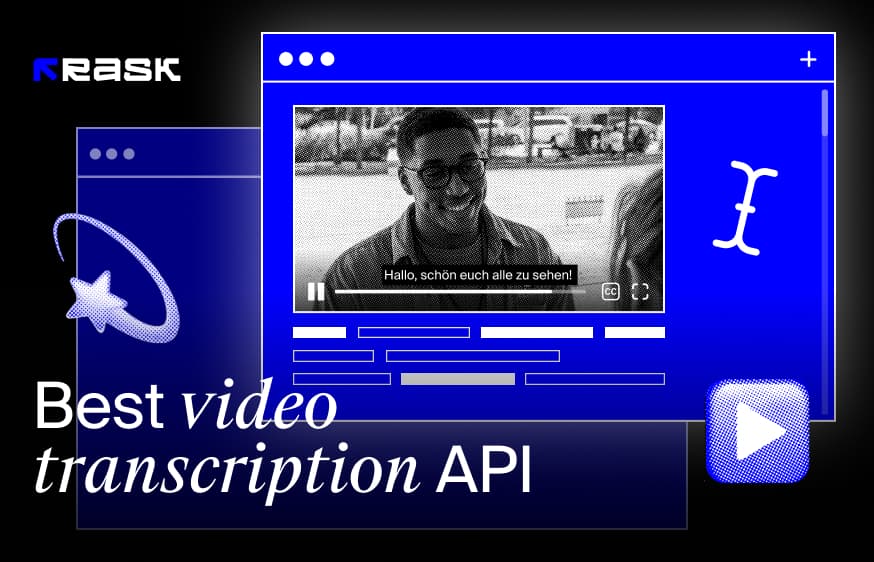

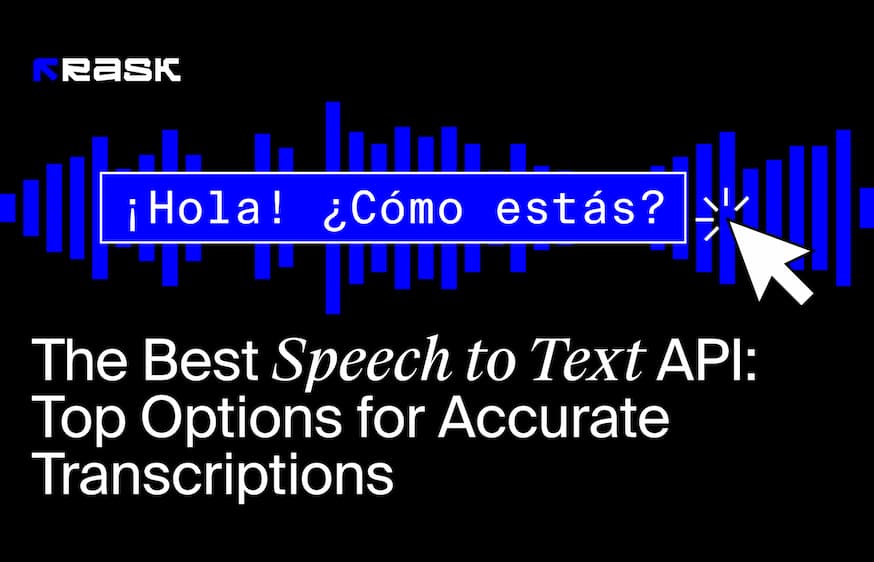

.jpg)
.webp)

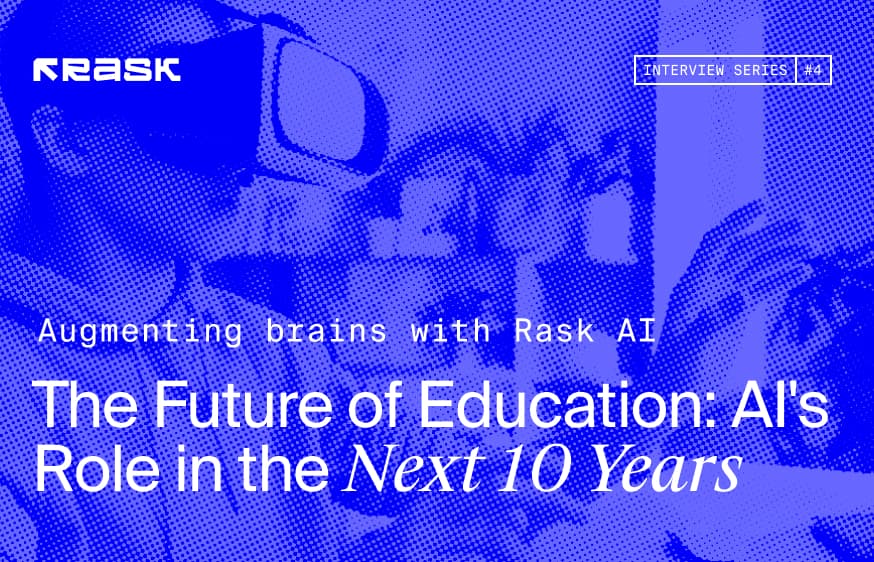
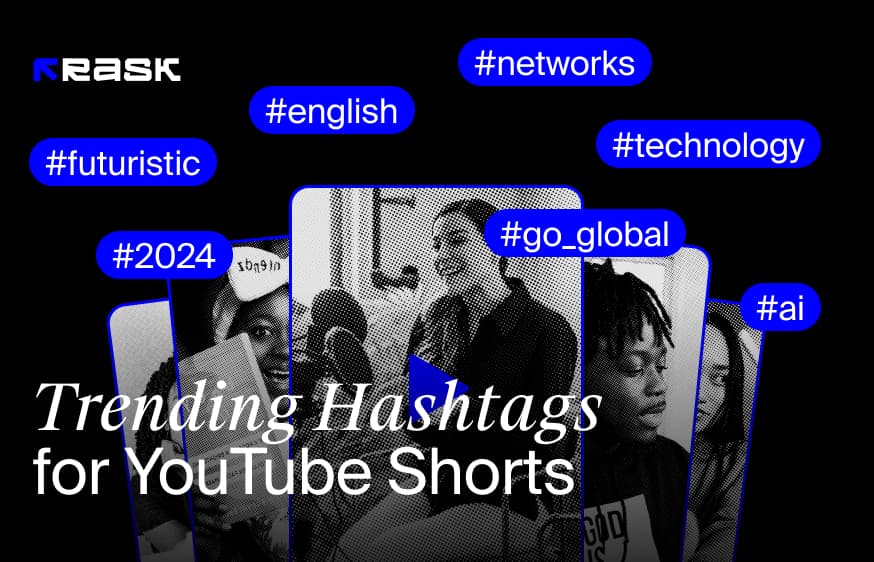
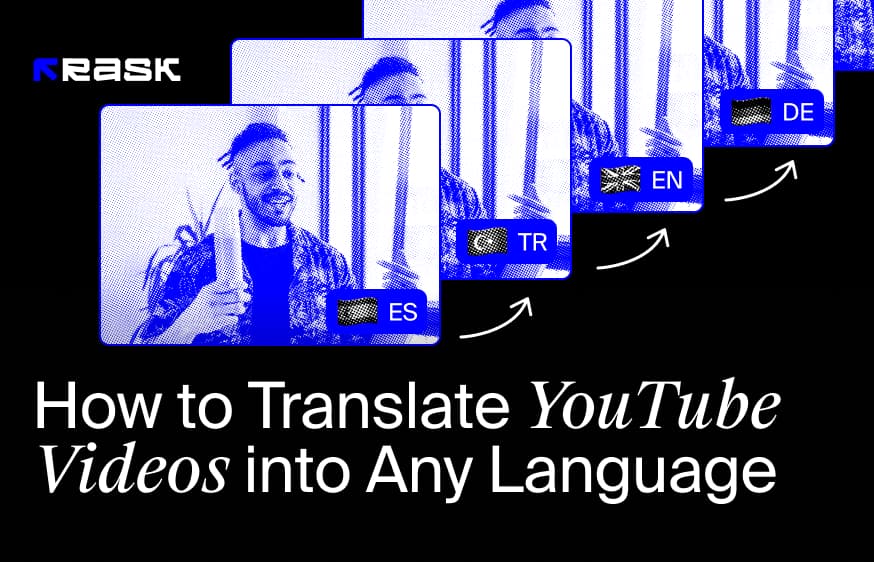
![सामग्री निर्माताओं के लिए 8 सर्वश्रेष्ठ वीडियो अनुवादक ऐप [2024 का]](https://rask.ai/cdn-cgi/image/width=960,format=auto,fit=scale-down/https://cdn.prod.website-files.com/63d41bc99674c403e4a7cef7/6668a3dcd3175bd1d1c73c81_Best%20video%20translator%20apps%20cover.webp)
![वीडियो स्थानीयकरण के लिए सर्वश्रेष्ठ एआई डबिंग सॉफ्टवेयर [2024 का]](https://rask.ai/cdn-cgi/image/width=960,format=auto,fit=scale-down/https://cdn.prod.website-files.com/63d41bc99674c403e4a7cef7/66685014f68137eb05c89c16_Cover.webp)


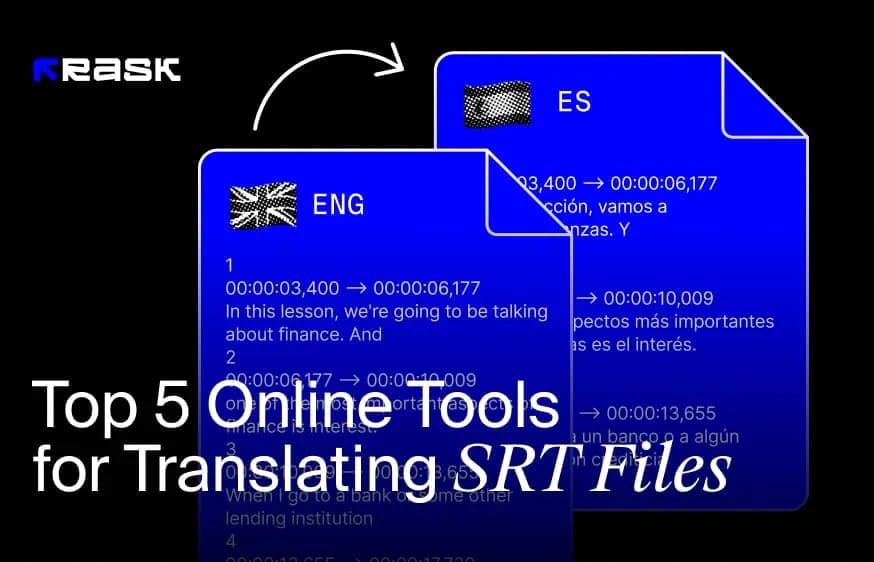
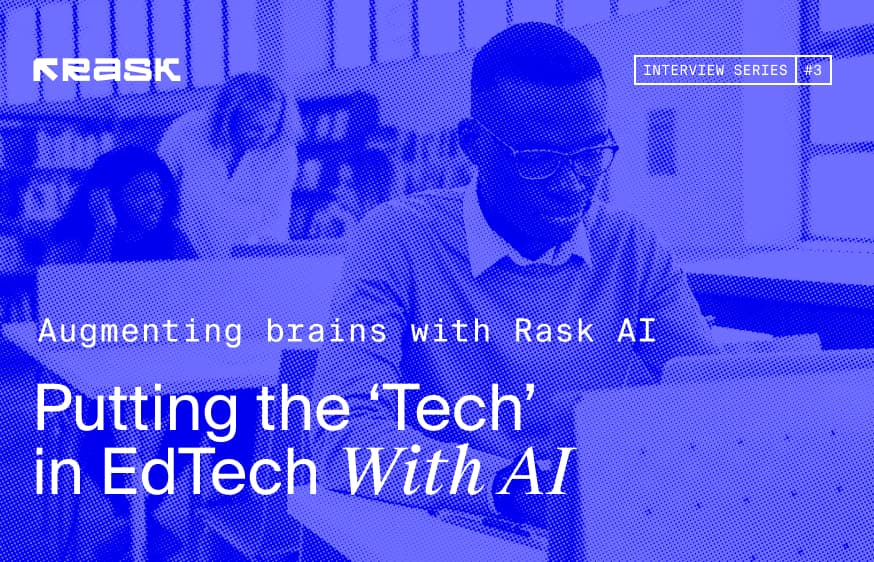
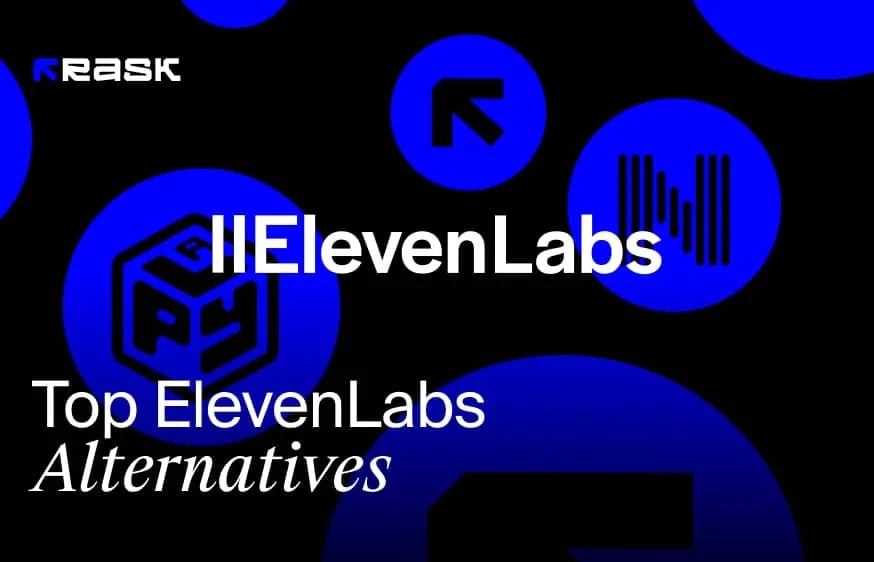
.webp)

